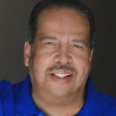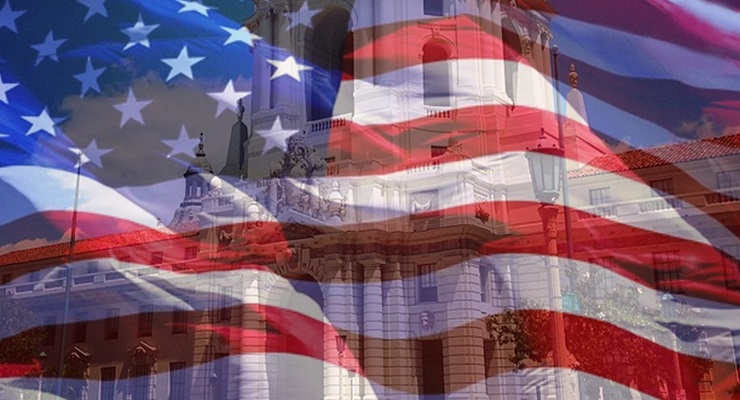 The Baseball Reliquary, Inc. has announced its list of fifty eligible candidates for the 2016 election of the Shrine of the Eternals, the membership organization’s equivalent to the Baseball Hall of Fame. This year marks the eighteenth annual election of the Shrine, a major national component of the Baseball Reliquary, a Southern California-based organization dedicated to fostering an appreciation of American art and culture through the context of baseball history. The fifty-one individuals previously elected to the Shrine of the Eternals are, in alphabetical order: Jim Abbott, Dick Allen, Roger Angell, Emmett Ashford, Moe Berg, Sy Berger, Yogi Berra, Steve Bilko, Ila Borders, Jim Bouton, Jim Brosnan, Bill Buckner, Glenn Burke, Roberto Clemente, Steve Dalkowski, Dizzy Dean, Rod Dedeaux, Jim Eisenreich, Dock Ellis, Eddie Feigner, Mark Fidrych, Curt Flood, Ted Giannoulas, Josh Gibson, Jim “Mudcat” Grant, Pete Gray, William “Dummy” Hoy, Shoeless Joe Jackson, Bill James, Dr. Frank Jobe, Bill “Spaceman” Lee, Roger Maris, Marvin Miller, Minnie Minoso, Manny Mota, Lefty O’Doul, Buck O’Neil, Satchel Paige, Jimmy Piersall, Pam Postema, Jackie Robinson, Rachel Robinson, Lester Rodney, Pete Rose, Casey Stengel, Luis Tiant, Fernando Valenzuela, Bill Veeck, Jr., Maury Wills, Kenichi Zenimura, and Don Zimmer.
The Baseball Reliquary, Inc. has announced its list of fifty eligible candidates for the 2016 election of the Shrine of the Eternals, the membership organization’s equivalent to the Baseball Hall of Fame. This year marks the eighteenth annual election of the Shrine, a major national component of the Baseball Reliquary, a Southern California-based organization dedicated to fostering an appreciation of American art and culture through the context of baseball history. The fifty-one individuals previously elected to the Shrine of the Eternals are, in alphabetical order: Jim Abbott, Dick Allen, Roger Angell, Emmett Ashford, Moe Berg, Sy Berger, Yogi Berra, Steve Bilko, Ila Borders, Jim Bouton, Jim Brosnan, Bill Buckner, Glenn Burke, Roberto Clemente, Steve Dalkowski, Dizzy Dean, Rod Dedeaux, Jim Eisenreich, Dock Ellis, Eddie Feigner, Mark Fidrych, Curt Flood, Ted Giannoulas, Josh Gibson, Jim “Mudcat” Grant, Pete Gray, William “Dummy” Hoy, Shoeless Joe Jackson, Bill James, Dr. Frank Jobe, Bill “Spaceman” Lee, Roger Maris, Marvin Miller, Minnie Minoso, Manny Mota, Lefty O’Doul, Buck O’Neil, Satchel Paige, Jimmy Piersall, Pam Postema, Jackie Robinson, Rachel Robinson, Lester Rodney, Pete Rose, Casey Stengel, Luis Tiant, Fernando Valenzuela, Bill Veeck, Jr., Maury Wills, Kenichi Zenimura, and Don Zimmer.
The Shrine of the Eternals is similar in concept to the annual elections held at the Baseball Hall of Fame, but differs philosophically in that statistical accomplishment is not a criterion for election. Rather, the Shrine’s annual ballot is comprised of individuals – from the obscure to the well-known – who have altered the baseball world in ways that supersede
statistics.
On a procedural level, the Shrine of the Eternals differs significantly from the Baseball Hall of Fame in the manner by which electees are chosen. While the Baseball Hall of Fame’s electees are chosen in voting conducted by a select group of sportswriters or committees, the Baseball Reliquary chooses its enshrinees by a vote open to the public. A screening committee appointed by the Reliquary’s Board of Directors prepares a ballot consisting of fifty candidates, on which the membership votes annually. The three candidates receiving the highest percentage of votes gain automatic election.
Among the fifty eligible candidates for 2016, twelve individuals appear on the Shrine of the Eternals ballot for the first time. The newcomers, in alphabetical order, are:
Isabel Alvarez (b. 1933) – The youngest Latina to join the All-American Girls Professional Baseball League, Havana native “Lefty” Alvarez debuted as a pitcher and outfielder at the age of thirteen with the Estrella Cubanas, an All-Star team modelled after the AAGPBL. She debuted with the Chicago Colleens in 1949 at the age of fifteen and played with several other AAGPBL teams before the league folded after the 1954 season. She enjoyed her best season in 1950, going 6-6 as a pitcher and batting a career-high .256. Despite communication difficulties with her Anglo teammates, Alvarez carved out a nice career in the States; after gaining U.S. citizenship she settled in Ft. Wayne, Indiana, where she is active as a columnist for Touching Bases, the AAGPBL Players Association newsletter.
Reuben Berman (1890-1977) – At a game played in the Polo Grounds in 1921, a fan named Reuben Berman retrieved a foul ball hit into the stands. The custom of the day required that the ball be returned to the playing field. Mr. Berman refused to do so, initiating a brouhaha which resulted in threats, the trading of blows and profanities, and a day in court for Berman. The court ruled in Berman’s favor, allowing him – and now all other fans – to keep any foul ball hit into the stands. The implementation of “Reuben’s Law” turned Berman into a bona fide baseball folk hero.
Emilio Cordova (b. 1929) – In the Dominican Republic, Emilio Cordova is known as “the immortal sports historian,” a living archive of Dominican baseball. In 1944, as a precocious fifteen-year-old, Cordova published his first column. His most recent columns – “The Baseball of Yesterday” and “The Tuesday Chronicle” – have been running since 1968 and 1982. He has written hundreds of thousands of words on baseball in the Dominican, published 22 books, and still hosts sports programs on television. His personal archive is massive, holding treasures from Major League and Negro League stars in addition to material on Dominican players.
Wayne Doba (b. 1950) – In 1984, during the height of baseball’s mascot craze (the San Diego Chicken, Phillie Phanatic, et al.), the dreadful San Francisco Giants unveiled the first and only Anti-Mascot, the Crazy Crab. Actor Wayne Doba was the man selected to wear the Crab costume, described as looking more like a “giant foam hamburger with legs” than a crab. Doba had the difficult and at times dangerous job of being the recipient of Giants fans’ ire, enduring multiple peltings by flying objects thrown from the stands. Doba, the Crazy Crab, and the Anti-Mascot lasted only one season as Giants mascot, but the Crab still lives in fan lore.
Arnold Hano (b. 1922) – Acclaimed editor, novelist, biographer, and journalist, Arnold Hano is best-known for his critically acclaimed eyewitness account of Game One of the 1954 World Series, A Day in the Bleachers, a game highlighted by Willie Mays and “The Catch.” His award-winning career in journalism, and his unabashed love of baseball, are captured in the recent documentary, Hano! A Century in the Bleachers.
Mike Hessman (b. 1978) – One of only four minor league players to hit more than 400 home runs in a career, the well-traveled Hessman broke the all-time minor league home run record previously held by Buzz Arlett when he clouted dinger number 433 in 2015 as a member of the Toledo Mud Hens. Hessman was signed by the Atlanta Braves in 1996 and spent eight years in their system before making his MLB debut in 2003 – his first hit was a pinch-hit home run. He would later spend time in the Detroit, Cincinnati, and New York Mets systems, making brief appearances in The Show, but spending most of his playing time in the high minors. In 2007, while with the Mud Hens, he was named the International League’s Most Valuable Player. He was selected to play for the U.S. team in the 2008 Summer Olympics; he would later play for the Orix Buffaloes in Japan and in the Venezuelan and Mexican Pacific Winter Leagues. This real life version of Bull Durham’s Crash Davis retired at the end of his record-breaking 2015 season.
Ted Kluszewski (1924-1988) – Muscular first baseman who played the bulk of his career with the Cincinnati Reds, “Big Klu” thrilled Queen City fans with his ability to smash baseballs over the fence. A four-time All-Star and near-miss MVP winner in 1954, a season in which he led the NL in home runs (49) and RBI (141) while batting a lusty .326, Klu had the misfortune of playing with second-division clubs most of his career, appearing in the World Series only once (1959) as a member of Chicago’s “Go-Go Sox.” When the Reds adopted sleeveless, tunic-style uniforms, Klu complained that the underlying long-sleeved baseball shirt interfered with the ability to flex his fifteen-inch biceps. So he played with arms bare, a bold move in the staid 1950s, and a personal fashion statement that in time became his signature look in photographs and on baseball cards: the slugger as beefcake. If not for a back injury sustained during a clubhouse fight in 1956, Kluszewski easily would have enhanced his career slugging totals enough to gain Hall of Fame admittance. A great fan favorite, this “mountain of a man” is considered by many today as one of baseball’s most underappreciated slugging stars of the postwar period.
Don Newcombe (b. 1926) – Mound ace for the Brooklyn Dodgers during the franchise’s glory days in the 1950s, “Newk” was among the most feared power pitchers in the National League. In 1949 he received Rookie of the Year honors; later he would cop a Cy Young Award and be named Most Valuable Player in the same season, the first player ever to win all three awards during his career. The last living Dodgers link to Jackie Robinson, Newcombe battled virulent racism most of his career, and later struggled with alcoholism and cancer. In 1951 he became the first African American pitcher to win 20 games in a season, a feat accomplished two other times, and posted a stellar 27-7 campaign in 1956. Despite his success during the regular season, Newk went 0-4 in five World Series starts, and was the starting pitcher in the final playoff game against the Giants in 1951, the famous “Miracle at Coogan’s Bluff” won by Bobby Thomson’s dramatic home run off reliever Ralph Branca. In 1970, ten years after his playing career ended, he was tabbed by the L.A. Dodgers to run baseball’s first community relations program. He remains a fixture at Dodger Stadium.
Bing Russell (1926-2003) – Ubiquitous face on American TV during the fifties and sixties, actor Bing Russell, father of actor Kurt Russell, parlayed his success into the ownership of the Portland Mavericks, an independent team in the Class-A Northwest League. True to the team’s name, Russell broke with tradition in several novel ways, hiring the first female general manager, for example, and banning all corporate sponsorship inside the ballpark. The larger than usual 30-man roster allowed many former Major Leaguers to have one last shot at glory. The Mavericks made baseball fun and it worked: the Mavericks set a record in 1977 for the highest attendance in minor league history. The Battered Bastards of Baseball, a 2014 documentary, offers a loving and humorous view of Russell and his team.
Billy Scripture (b. 1941) – Former ballplayer, manager, and instructor in professional baseball noted for his intensity, toughness, and dedication to teaching. The most quoted stories about Scripture describe his habit of biting the covers off baseballs when frustrated. A career minor-leaguer, Scripture later became an instructor in several MLB systems, gaining a reputation as both a great teacher and major pain-in-the-ass. Respected, yes; a bit frightening, indeed. The Wake Forest alum retired from baseball in the mid-1980s to concentrate on his greatest passion, trap shooting. Good thing for his students that he never mistook a baseball bat for a rifle.
Dr. David Tracy – Manhattan psychologist who boasted that his novel relaxation and focusing techniques could turn even the perennially pathetic St. Louis Browns into winners. Browns owner Bill DeWitt hired him to instill confidence, through hypnosis, in the woeful team, but Tracy soon discovered that the Browns were so dreadful as to be impervious to his techniques, a team suffering from chronic “loser’s syndrome.” In the first game after Tracy’s initial sessions, June 6, 1950, the Red Sox dealt the Browns a 20-4 thrashing; Boston humiliated St. Louis the following day, too, 29-4. There was no next day for Dr. Tracy (or “the whammy man” as the press described him): he continued his practice and research elsewhere. His work was partially vindicated when other teams began hiring sports psychologists shortly afterward. Tracy’s treatments of the Browns are parodied in The Natural and are documented in his book, The Psychologist at Bat (1951).
Steve Wilstein (b. 1948) – American sportswriter, author, and photographer, Steve Wilstein broke the news of St. Louis Cardinals slugger Mark McGwire’s use of androstenedione during the great home run race of 1998, a year in which McGwire shattered Roger Maris’s record of 61 home runs in a season by hammering 70 dingers. Wilstein’s report gave Americans their first glimpse of the game’s “Steroid Era” and triggered the Congressional investigation into the game – this despite the full weight of MLB coming down on Wilstein in an attempt to discredit the writer. Without question, Wilstein’s ongoing reports led to changes in MLB’s drug policy, including multi-game suspensions for PED violators, and helped remove the odor of taint, once again, from the grand old game.
A complete list of all fifty candidates for the 2016 election of the Shrine of the Eternals follows. Election packets, containing ballots and biographical profiles of all candidates, will be mailed to Baseball Reliquary members on April 1, 2016. To be eligible to vote, all persons must have their minimum $25.00 annual membership dues paid as of March 31, 2016.
The three new inductees will be announced in May, with the Induction Day ceremony scheduled for Sunday, July 17, 2016. In addition to the presentation of plaques to the 2016 inductees, this year’s ceremony will honor the recipients of the 2016 Hilda Award (named in memory of Hilda Chester and acknowledging a baseball fan’s exceptional devotion to the game) and the 2016 Tony Salin Memorial Award (presented annually to an individual dedicated to the preservation of baseball history).
For additional information on the Shrine of the Eternals, contact Terry Cannon, Executive Director of the Baseball Reliquary, at P.O. Box 1850, Monrovia, CA 91017; by phone at (626) 791-7647; or by e-mail at terymar@earthlink.net.














 0 comments
0 comments



